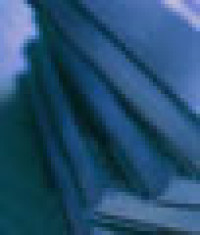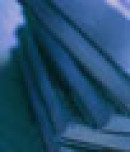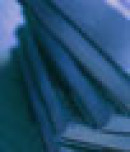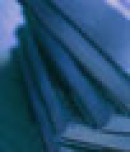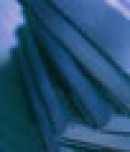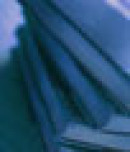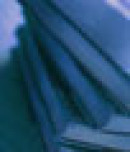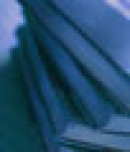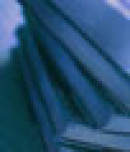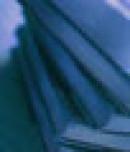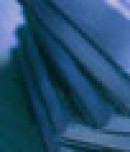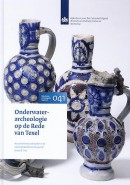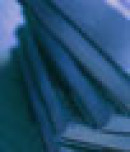Product informatie
- ISBN 9789088903892
- ISBN 10 9088903891
- Druk 1
- Bindwijze Paperback
- Taal Engels
- Uitgever Sidestone Press
- Onderwerp Archeologie
- Beschikbaar sinds 14 Oktober 2016
Samenvatting
The focus of Archaeological Open-Air Museums (AOAMs) is to present both the tangible and intangible past to the public. The tangible parts of AOAMs are the archaeological remains and the reconstructions. The intangible and, in some respects the most interesting part of an AOAM, is the story of the people the museum represents. This volume explores the research and visitor agendas of structures and their life cycles as they are experienced by experimental archaeology projects and AOAMs. The papers presented include research undertaken by both academics and craft specialists and demonstrate the value of experiential and experimental research to enhance both the visitor experience and research agendas. The papers were brought together as part of the OpenArch Project\'s Dialogue with Science ... Work Package. OpenArch is a five year project with eleven international partners funded with support from the European Commission. Structures include houses, boats, forges, and other diverse constructions. The structures are not static entities but change through time going through a life cycle. Key themes are the birth, life and death of structures. To explore these key themes papers in this volume consider the planning phase, the assembling of materials, the construction period and then the maintenance and repair needs and the change of use of structures as they age. For some structures this also includes issues surrounding decay, dilapidation, dismantling and destruction of these experimental structures. Understanding of these biographies not only contribute to our understanding of the archaeological record they also enable a consideration of the intangible aspects of structures whilst enhancing the visitor experience. Contents PrefacePenny Cunningham, Linda Hurcombe, and Leena Lehtinen 1 Introduction: The object biography approach to structuresLinda Hurcombe & Penny Cunningham Planning Structures 2 Hands on Heritage: experimental and experiential archaeology in the Avalon Marshes, Somerset, UK.Richard Brunning 3 "U Pagghiaru": studies of traditional shepherd\'s huts and their relevance to a Bronze Age hut-rebuilding project in SicilyKati Caruso and Claudia Speciale Thinking through structures 4 Plant materials, hides and skins as structural components: perishable material culture and archaeological invisibilityTheresa Emmerich Kamper and Linda Hurcombe 5 Saving it for later: gathering, processing and food storage structuresPenny Cunningham 6 Boats as structuresLinda Hurcombe & Brian Cumby 7 Experiments on possible Stone Age glue typesWerner Pfeifer Construction 8 Experiences of thatching at Kierikki Stone Age Village, FinlandInga Nieminen 9 A gateway to the Bronze Age: Experimenting with woodworking methods of the Terramara culture in Montale in ItalyWolfgang Lobisser 10 "From Earth I Rose" Experimenting stone slab furnaces of the Finnish Early Iron AgeJoni-Pekka Karjalainen and Juuso Vattulainen 11 Polvus eris et in polvus reverteris: Experimental production of Iberian iron and post-processing approach to the furnace structuresJosé Miguel Gallego Cañamero, Manel Gómez Gutiérrez and Josep Pou I Vallès Structures 12 Testing the indoor environment and personal health in an inhabited reconstructed Viking Age house during winterJannie Marie Christensen 13 Experiences concerning Stone age building constructions in FinlandEero Muurimäki Decline of structures 14 Blackhand Kiva: biography of a replica ancestral Pueblo subterranean masonry-lined structure, Montezuma County, Colorado, USABruce Bradley 15 The day the house sat down: the deterioration and collapse of the Ferrycarrig roundhousesTrÃona Sørensen
Meer boeken van uitgever Sidestone Press
Meer boeken met de onderwerpen Archeologie
Veel gestelde vragenmeer antwoorden
Hoe werkt Resale.nl?
Je kunt op de website advertentie(s) plaatsen van de boeken die u wilt verkopen. Een potentiële koper neemt dan contact met je op om samen een prijs af te spreken en de transactie verder af te handelen. Houdt hierbij onze aanbevelingen voor een veilige transactie in gedachten en voorkomt dat je slachtoffer wordt van oplichting.
Hoe kom ik in contact met de verkoper?
Je kunt een reactie versturen door bij de betreffende advertentie van de verkoper op de knop ‘doe een bod’ te drukken. Je kunt nu een bod doen op de advertentie en een persoonlijk bericht toevoegen. Het verstuurde bod brengt je in contact met de verkoper via e-mail.
Wat zijn de kosten voor het verkopen van mijn studieboeken?
Je kunt geheel gratis gebruik maken van de diensten van Resale.nl. Resale.nl haalt zijn inkomsten uit advertenties.
Hoe kan ik een boek kopen?
Resale.nl werkt globaal op de volgende manier:
- Zoek via het zoekveld het studieboek dat je wilt kopen.
- Uit de zoekresultaten kies je het studieboek waar je geïnteresseerd in bent.
- Op de detailpagina van het studieboek kun je een overzicht vinden van de personen die het studieboek verkopen.
- Je kunt nu een bod plaatsen door op de button te klikken. Het bod wordt via e-mail aan de verkoper verzonden.
- De verkoper van het studieboek neemt contact met je op door een reactie te geven op het bod dat je hebt verzonden. Met de verkoper kun je gezamenlijk een prijs afspreken. Houdt hierbij onze aanbevelingen voor een veilige overdracht in gedachten en voorkom dat u slachtoffer wordt van oplichting.
Hoe weet ik wat ik koop?
Om te achterhalen of wat je koopt ook daadwerkelijk is wat er wordt geadverteerd is het verstandig om bij de verkoper langs te gaan en het aangebodene te bezichtigen. Doe je dit niet, dan loopt je een zeker risico. Onder het kopje ‘Hoe kan ik de kans op misbruik verkleinen’ kun je meer over dit onderwerp vinden.
Kopers over Resale.nl
bart van gijsel
"Ik ben erg tevreden over deze verkoper de familie thus. Goede snelle levering."
Patrice Michel
"De verkoper heeft er alles aan gedaan om het door mij bestelde product zo snel mogelijk naar mij toe te krijgen. Heeft me van iedere stap op de hoogte ..."
marjolein
"Besteeling snel bezorg, in goede staat net zoals beschrijving en goede communicatie met verkoper!"
marjolein
"Goed contact, snel en in goede orde ontvangen. Staat van het boek was zo goed als nieuw!"
hilda1
"goede medewerking en hulp dank u wel"
Tineke
"Het bestelde werd netjes en snel afgeleverd. De prijs was goed."
stacy
"Goed verpaktBoek ziet er mooi uit"
elisa
"Goede levering alleen jammer dat er niet bij was gezet dat er al in geschreven was"
Elly
"Verkoper reageerde snel op mijn emails en heeft ook het boek snel opgestuurd.Het boek was niet van nieuw te onderscheiden. Was waarschijnlijk niet gebruikt. ..."
Gerard+[2]
"Prettig contact gehad en goed zaken kunnen doen."
